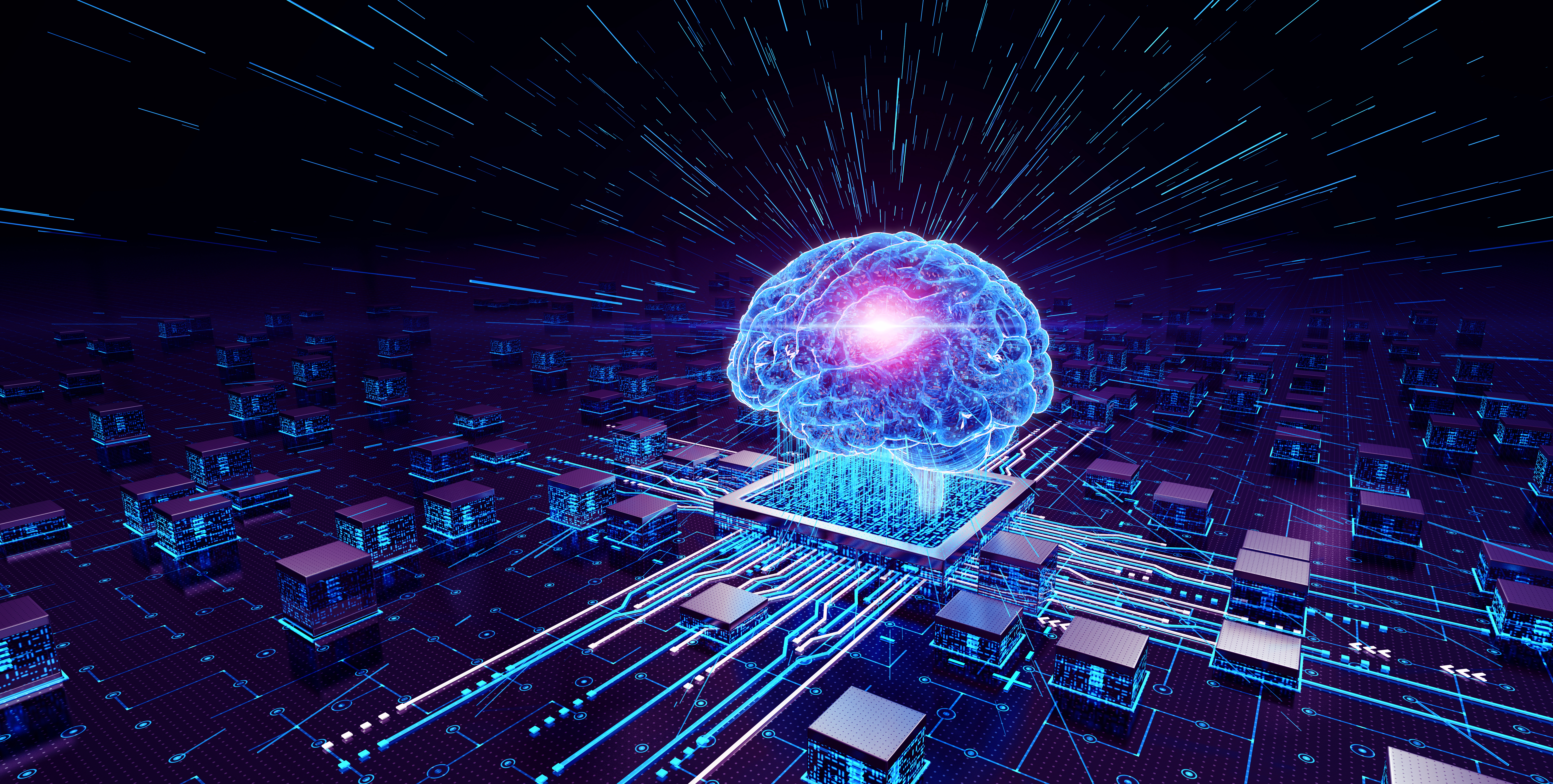Redefining the Future of Enterprise Content Management: A Synergy Between Humans and Machines
Kabir Mitra
3 mins

Collaboration between humans and machines is set to redefine our lives by 2030, enhancing human capabilities and boosting efficiency.
According to leading research reports a whopping 80% of enterprise data is unstructured, and 70% is composed of free-form text like emails, comments and documents. Such a wealth of information presents both a challenge and an opportunity. With the advent of emerging technologies such as Artificial Intelligence (AI) and Machine Learning (ML), organizations are poised to leverage them to tackle enterprise content challenges head-on.
In the midst of digital transformation, our human landscape is undergoing a fascinating evolution. Visionaries across academics, business, and entrepreneurship are envisioning futures where the advanced capabilities of these cutting-edge technologies can profoundly impact our society, and open up a world of endless possibilities.
The Partnership of Tomorrow
Throughout history, humans have coexisted and collaborated with technology, for example from the invention of the typewriter to the ubiquity of smartphones. However, the rapid advancements in software, Big data analytics, and processing power have opened doors to new possibilities. We're on the brink of a paradigm shift in our relationship with machines, characterized by unprecedented levels of synergy and efficiency.
As technology continues to advance exponentially, so does our reliance on it. This symbiotic relationship between humans and machines holds the promise of unparalleled productivity and innovation. While humans bring to the table uniquely human skills such as creativity and problem-solving, machines offer speed, automation, and efficiency. It's a partnership where each party complements the strengths of the other, leading to a future where our collective potential knows no bounds.
The Impact of Emerging Technologies
The landscape of emerging technologies is vast and varied, encompassing Artificial Intelligence, Machine Learning, mobility, and Cloud Computing. In this blog, we'll delve into how these technologies are poised to shape society by 2030, and serve as the cornerstone of the new human-machine partnerships.

Usability Reigns Supreme
When it comes to adopting new software, a strategic approach is essential to ensure seamless integration and user adoption. Both software providers and customers unanimously agree on the paramount importance of usability.
Vendors of enterprise content management (ECM) systems have made significant strides in enhancing usability over the past few years. With organizations recognizing the immense business value of ECM, the emphasis has shifted towards ensuring that these solutions are user-friendly, thereby maximizing cost savings and productivity gains. After all, the true return on investment is only realized when users fully embrace and advocate for the technology.
A user-friendly ECM solution streamlines the onboarding process, offering features such as intuitive drag-and-drop interfaces, pre-configured templates, document previews, and user-friendly forms. However, true adoption is bolstered by customization—tailoring features and functionality to specific workflows and processes fosters a sense of ownership and familiarity among users, ultimately driving higher levels of engagement.
In ECM, facilitating information retrieval is paramount. Advanced ECM tools leverage contextual search capabilities, enabling users to locate documents based on content rather than just location. Additionally, advancements in metadata utilization enhance custom search functionalities, while innovative ECM solutions enable seamless access to content from any location via a single application, thus eliminating the need for cumbersome data migrations.
In essence, by prioritizing usability and customization, ECM solutions can revolutionize how organizations manage and interact with content, empowering employees to work more efficiently and effectively in an increasingly digitized world.
Mobility Transforms the Workplace
Gone are the days when work was confined to a specific time and place. Today, an increasing number of tasks are being carried out on mobile devices, blurring the lines between work and home. According to recent research, a significant majority of employees express a desire for remote work options such as telecommuting, flex-time arrangements, or working from home.
In response to this trend, organizations are mobilizing the tools and resources that employees rely on, enabling them to access data and workflows anytime, anywhere. By embracing mobility, businesses can not only accommodate the preferences of their workforce but also foster higher levels of engagement and productivity.
For remote workers, maintaining a seamless connection to business content, processes, and colleagues is equally important. Through the integration of Enterprise Content Management (ECM) solutions and mobile technologies, organizations can ensure that remote employees remain fully immersed in the workflow, regardless of their physical location.
Navigating Agility: Embracing the Hybrid Approach
Data is the king, making seamless access to information is regarded as a critical component of business agility. Cloud computing plays a pivotal role in meeting this demand, offering the flexibility and scalability required in today's fast-paced environment. However, for organizations with substantial investments in on-premise infrastructure, transitioning to the cloud can pose challenges.
Here the hybrid approach becomes life savers. It is a strategic blend of on-premise and cloud-based solutions designed to bridge the gap between legacy systems and modern technologies. This hybrid strategy serves as a stepping stone, enabling organizations to modernize their IT infrastructure while safeguarding their existing investments. By leveraging ECM solutions that support a hybrid environment, businesses can navigate the complexities of digital transformation with confidence and ease.
Harnessing the Power of Metadata
Metadata, often referred to as "information about information," is poised to revolutionize content management. Previously, business processes revolved around individual stored documents, with a handful of metadata attributes, or tags, accompanying each file. These attributes typically included details like filename, creation date, author, and content type. Once these metadata schemas were established, they remained largely static, as any changes required extensive development efforts and mass updates across all related content.
However, the advent of modern Content Services Platforms (CSPs) has ushered in a new era of flexibility and adaptability. Unlike their predecessors, modern CSPs allow for dynamic changes to metadata schemas, enabling the addition of new fields with ease. Furthermore, the scope of metadata has expanded significantly, encompassing diverse attributes such as image resolutions, document language, geophysical data, and even sentiment analysis.
The true potential of enriched metadata is realized when coupled with Artificial Intelligence (AI). By leveraging AI algorithms, organizations can expedite the creation and classification of metadata attributes, unlocking unprecedented insights hidden within their content repositories. For instance, consider an ECM repository housing customer agreements, where only basic metadata attributes like customer reference numbers are present, signaling a lack of comprehensive management. With an AI-infused CSP, organizations can swiftly extract vital attributes such as project details, customer contacts, and contract terms, facilitating enhanced document management and decision-making processes.
Artificial Intelligence and Machine Learning in Action
AI and ML are not just buzzwords; they're catalysts for innovation in ECM. From digitization acceleration to intelligent indexing and automated governance, these technologies are reshaping the way we manage and interact with content. By harnessing the power of AI and ML, organizations can unlock new levels of productivity and efficiency, paving the way for a future where content management is smarter, faster, and more intuitive than ever before.
Artificial Intelligence: AI represents the machine emulation of human actions, requiring a robust foundation of relevant and clean content to operate effectively. Much like a harvest depends on fertile soil, AI projects thrive on quality data inputs. Without meaningful information, the output of AI systems is rendered futile.

Machine Learning: ML, a subset of AI, empowers computer systems to "learn" from data patterns through statistical methods. A classic example of ML in action is spam filtering for emails, where algorithms categorize incoming messages based on keywords to differentiate between spam and legitimate content. The fusion of AI and ML with ECM presents a plethora of opportunities, including:
Accelerated Digitization: AI and ML can expedite the conversion of various media types into digital formats, enhancing the organization of content and facilitating digitization efforts.
Intelligent Indexing: By training systems to autonomously capture and classify content, ML streamlines processes such as document scanning and initiates workflows with minimal human intervention.
Self-learning Capabilities: ML algorithms continuously evolve and refine their understanding of content, automatically identifying relevant index terms in similar documents to enhance search accuracy.
Natural Language Processing (NLP): NLP techniques analyze written and spoken language, considering syntax and semantics to establish context and intent, thereby simplifying information retrieval.
Automated Governance: AI and ML assist in enforcing regulatory mandates by automatically managing data in compliance with specific parameters, ensuring adherence to regulations such as General Data Protection Regulation (GDPR) and Health Insurance Portability and Accountability Act (HIPAA).
As we stand on the cusp of the Data of Everything (DoE), the possibilities are endless. The future of ECM isn't just about technological innovation; it's about embracing a new mindset—one that embraces collaboration, innovation, and the limitless potential of human-machine partnerships. While the era of self-driving cars and flying robots may still be on the horizon, the future of AI for content management is already here, heralding a new era of productivity and possibility.
Stay up-to-date with the latest insights and news from Sedin
Subscribe to email updates